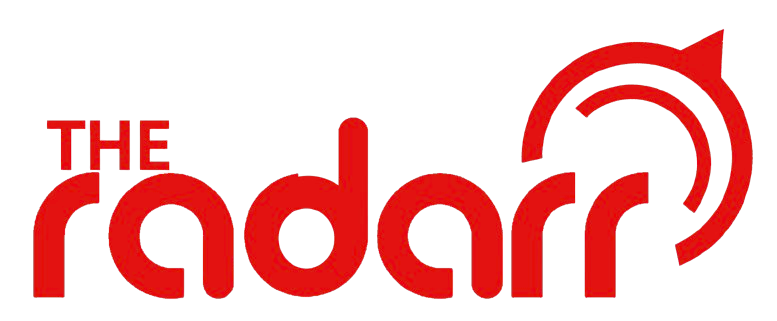Introduction
Nigeria remains one of the most challenging environments for maternal and infant health globally, despite decades of policy reforms and international support. Maternal and infant mortality are critical indicators of a country’s healthcare quality and accessibility, yet Nigeria’s progress in these areas has been slow and uneven. The situation is particularly dire in rural communities, where access to skilled health personnel, emergency services, and essential maternal health interventions remains limited. As the nation continues striving toward Universal Health Coverage (UHC) and Sustainable Development Goal 3 (Good Health and Well-being), there is a pressing need for a multifaceted approach that addresses the structural, financial, and socio-cultural barriers driving maternal and infant deaths.
Statistics on Maternal and Infant Mortality
Nigeria accounts for the second-highest number of maternal and child deaths globally. According to the World Bank (2020), Nigeria’s maternal mortality ratio stands at 1,047 per 100,000 live births, while the infant mortality rate is approximately 69 deaths per 1,000 live births. This translates to over 82,000 maternal deaths and more than 700,000 child deaths under the age of five each year. Rural and underserved areas suffer the brunt of these outcomes due to a lack of access to quality antenatal, delivery, and postnatal services. More than 60% of Nigerian women deliver at home, often without a skilled birth attendant. These statistics highlight the urgency for comprehensive interventions across all tiers of government, healthcare systems, and community structures.
- Adequate Financing: The Lifeline for Maternal and Infant Health
Healthcare financing in Nigeria remains grossly inadequate, posing a significant challenge to reducing maternal and infant mortality. In 2023, Nigeria allocated just about 5.75% of its national budget to health, far below the 15% benchmark agreed upon in the Abuja Declaration. Furthermore, recent reports show that only 58% of allocated state-level health budgets were utilised, indicating systemic inefficiencies in fund disbursement and expenditure. These financing gaps lead to a shortage of essential maternal and newborn care equipment, poor infrastructure in health facilities, and delayed access to emergency obstetric care—all of which contribute to preventable deaths.
The Basic Health Care Provision Fund (BHCPF), which earmarks at least 1% of Nigeria’s Consolidated Revenue Fund for primary healthcare, was established to improve access to quality maternal and child health services. However, its implementation has faced delays, corruption, and lack of transparency in fund allocation. Only a fraction of eligible Primary Health Care Centers (PHCs) have accessed these funds, limiting their capacity to provide lifesaving care. Scaling up investment and ensuring efficient fund utilization across all states can significantly improve antenatal, delivery, and postnatal services.
Public-private partnerships and increased donor funding have shown potential in bridging the healthcare financing gap. Investments in maternal health from global institutions like the Bill and Melinda Gates Foundation, Global Financing Facility (GFF), and UNICEF have supported immunization programs, capacity building, and maternal survival projects. However, sustained domestic funding remains essential for long-term impact. Nigeria must increase budgetary allocations for maternal and child health, enforce transparency mechanisms, and empower local governments to plan and execute maternal health interventions tailored to their unique needs.
- Community Involvement: The Heartbeat of Sustainable Change
Community engagement plays a vital role in changing perceptions, promoting timely care-seeking behavior, and increasing access to maternal health services. Cultural beliefs, misinformation, and lack of education continue to deter many women from seeking institutional care during pregnancy and childbirth. Initiatives such as community health education, peer-to-peer support groups, and the involvement of traditional and religious leaders have been successful in improving maternal health indicators in regions like Bauchi and Sokoto states.
A 2022 study conducted by the Abdul Latif Jameel Poverty Action Lab (J-PAL) revealed that community-based strategies, such as deploying trained health educators and incentivizing referrals to health centers, improved the uptake of antenatal services and immunization coverage in Northern Nigeria. These interventions also led to increased awareness of danger signs in pregnancy and childbirth. However, community programs must be adequately funded and integrated into state-level health policies to ensure continuity and scalability.
Women’s participation in health decision-making processes is also crucial. Female-led community health committees, traditional birth attendant training, and mother-to-mother support groups have empowered women with knowledge and agency to seek skilled care. Involvement of male partners and family decision-makers in reproductive health education further enhances acceptance of health facility deliveries. Strengthening these social structures at the grassroots level will accelerate progress toward safer pregnancies and healthier infants.
- System Development: Strengthening Infrastructure and Human Resources
Nigeria’s Primary Health Care (PHC) system, designed to be the first point of contact for healthcare, is in a state of disrepair. Of the over 30,000 PHCs nationwide, only about 20% are fully functional due to poor infrastructure, lack of electricity and water supply, stockouts of medicines, and absence of skilled staff. Many rural PHCs operate with one or two staff members, with no midwives or doctors available for emergencies. These structural weaknesses are major contributors to preventable maternal and newborn deaths.
Health workforce shortages remain a major bottleneck. Nigeria has a ratio of 1.95 doctors and 11.05 nurses/midwives per 10,000 people—far below the World Health Organization’s recommended minimum of 23 health workers per 10,000. The brain drain of healthcare workers due to poor remuneration and working conditions exacerbates this crisis. Investing in the recruitment, training, and retention of skilled birth attendants, midwives, and emergency care providers is critical. Incentives for rural postings and continuous capacity building are necessary to improve service delivery at the community level.
Technology and data systems are underutilized in Nigeria’s maternal health ecosystem. Digital health tools such as mobile pregnancy tracking, SMS appointment reminders, and electronic health records can enhance timely interventions and improve referral systems. Strengthening the national health information system to track maternal and child health indicators will allow for real-time response and resource planning. A resilient health system that combines infrastructure, skilled personnel, and data intelligence is the foundation for reducing maternal and infant mortality and achieving equitable health outcomes for all Nigerians.
Conclusion
Preventing maternal and infant mortality in Nigeria is possible, but it requires deliberate action across multiple sectors. Adequate financing ensures that resources are available, community involvement enhances trust and utilization, while system development ensures consistent, quality service delivery. A coordinated effort between government, civil society, donors, and the communities themselves can transform Nigeria’s maternal and infant health outcomes and set the country on a path to achieving Universal Health Coverage.
BY EHON, Idialu Anthony Ph.D.,
Health Economist and Monitoring, evaluation and Learning specialist,
Tel: 09130467601.









































